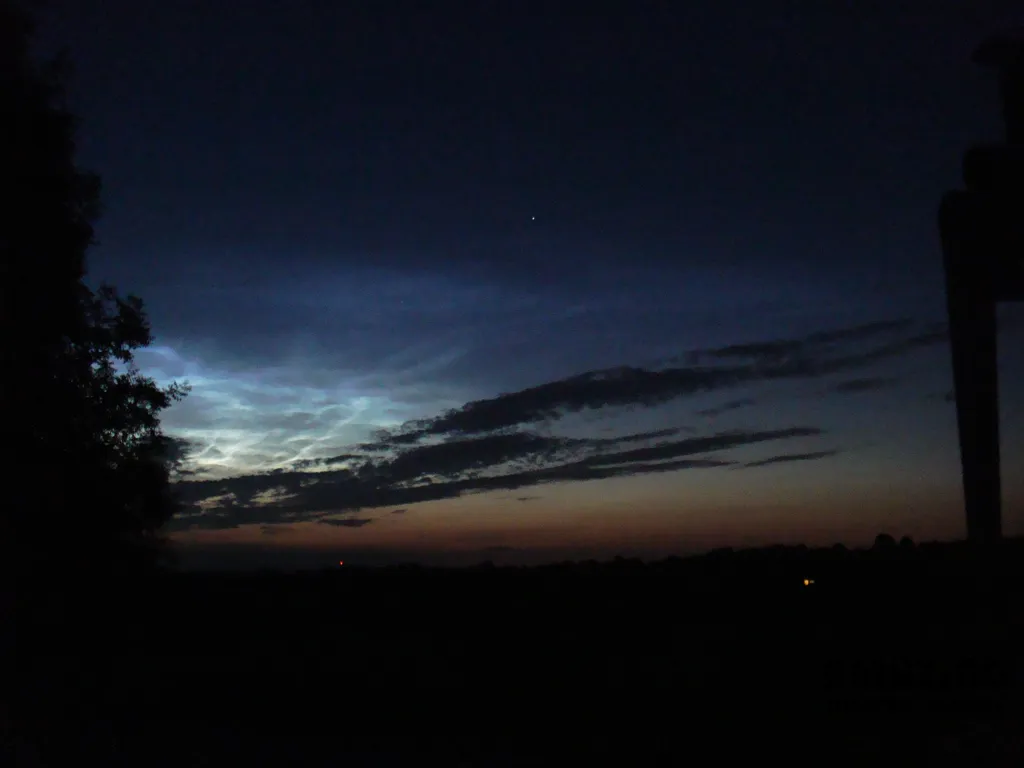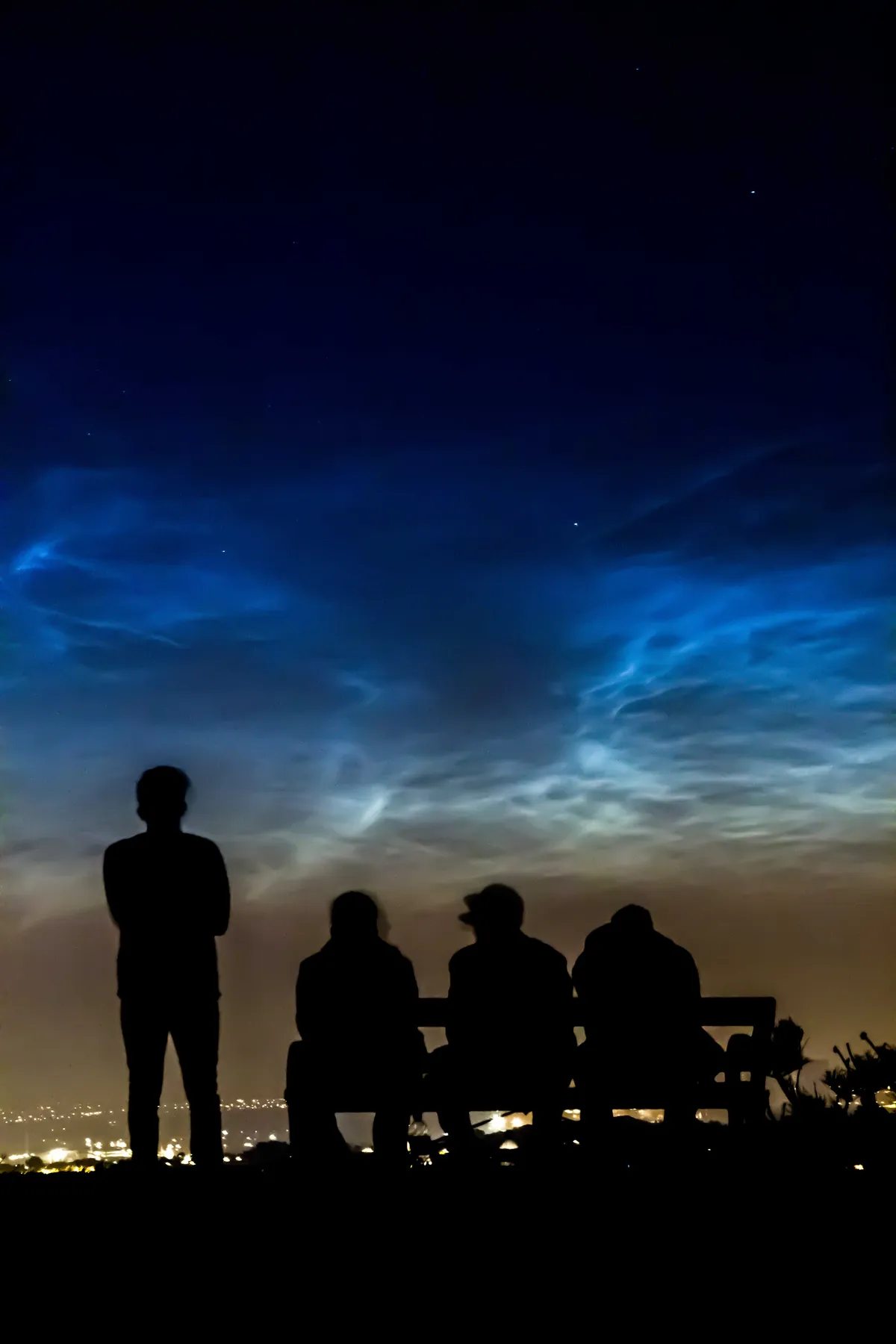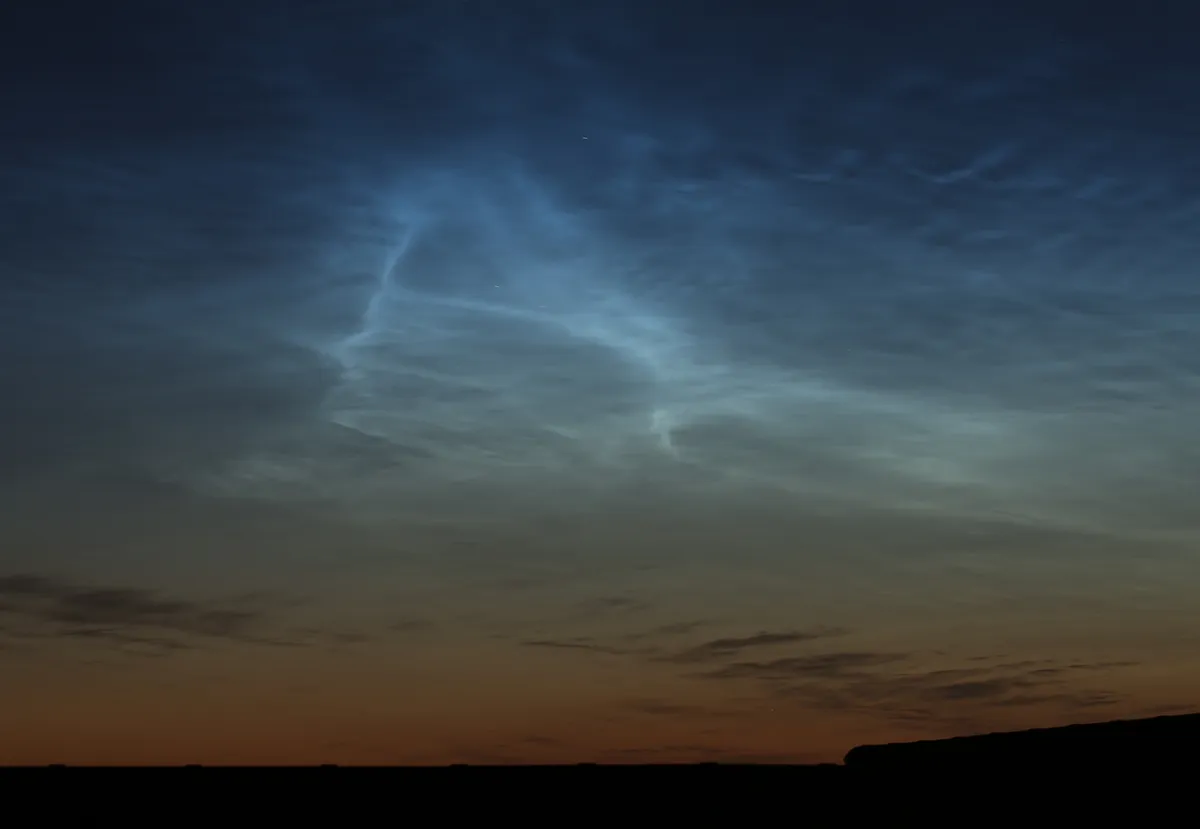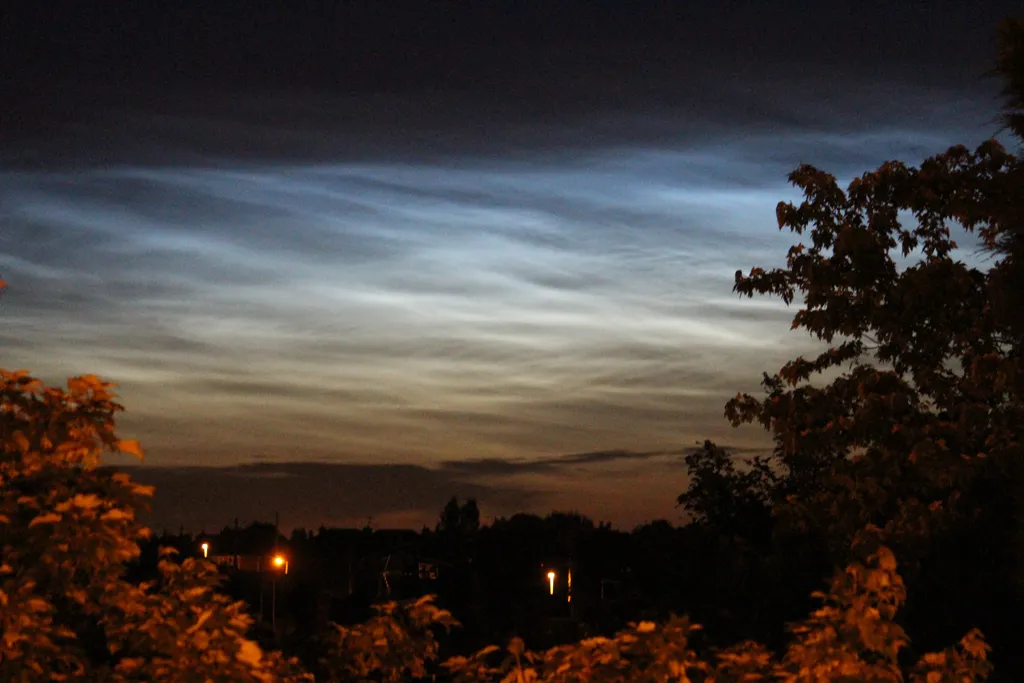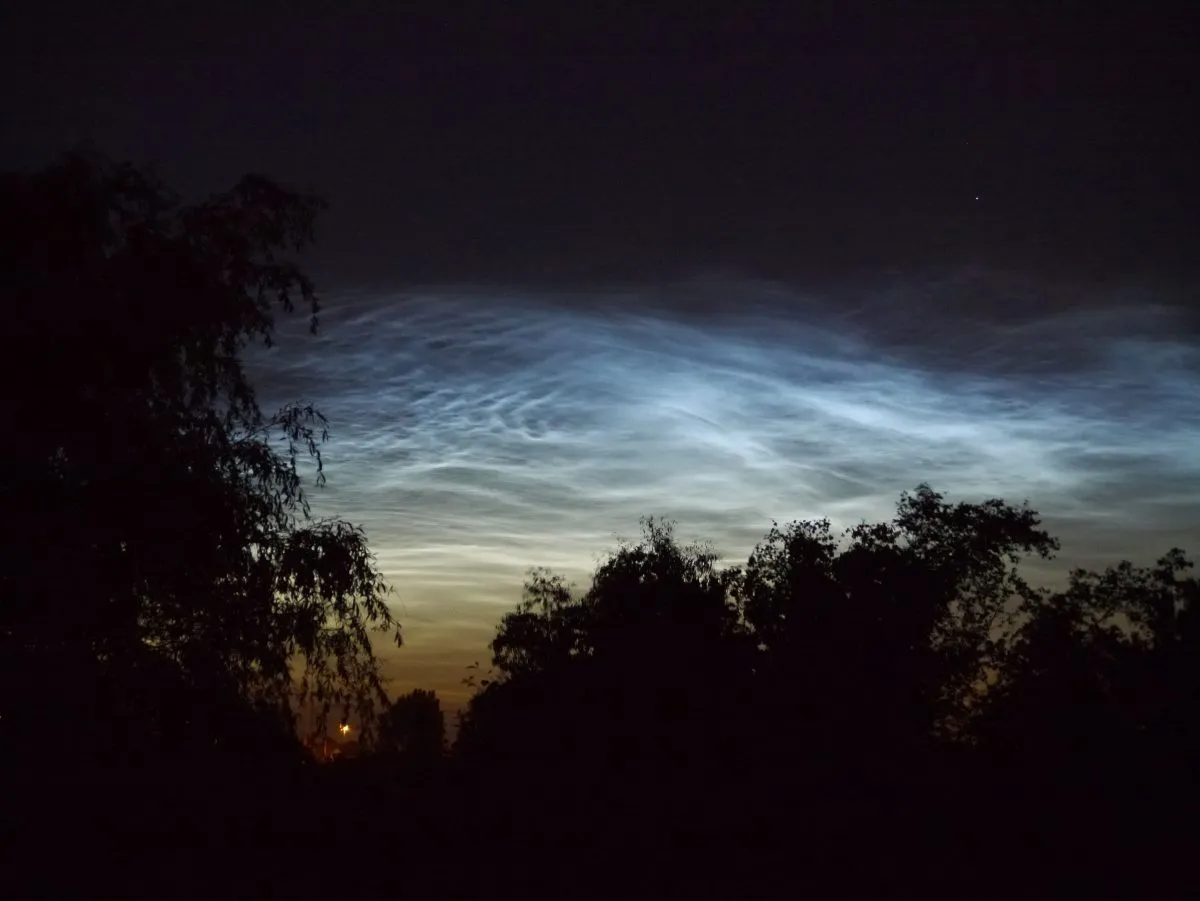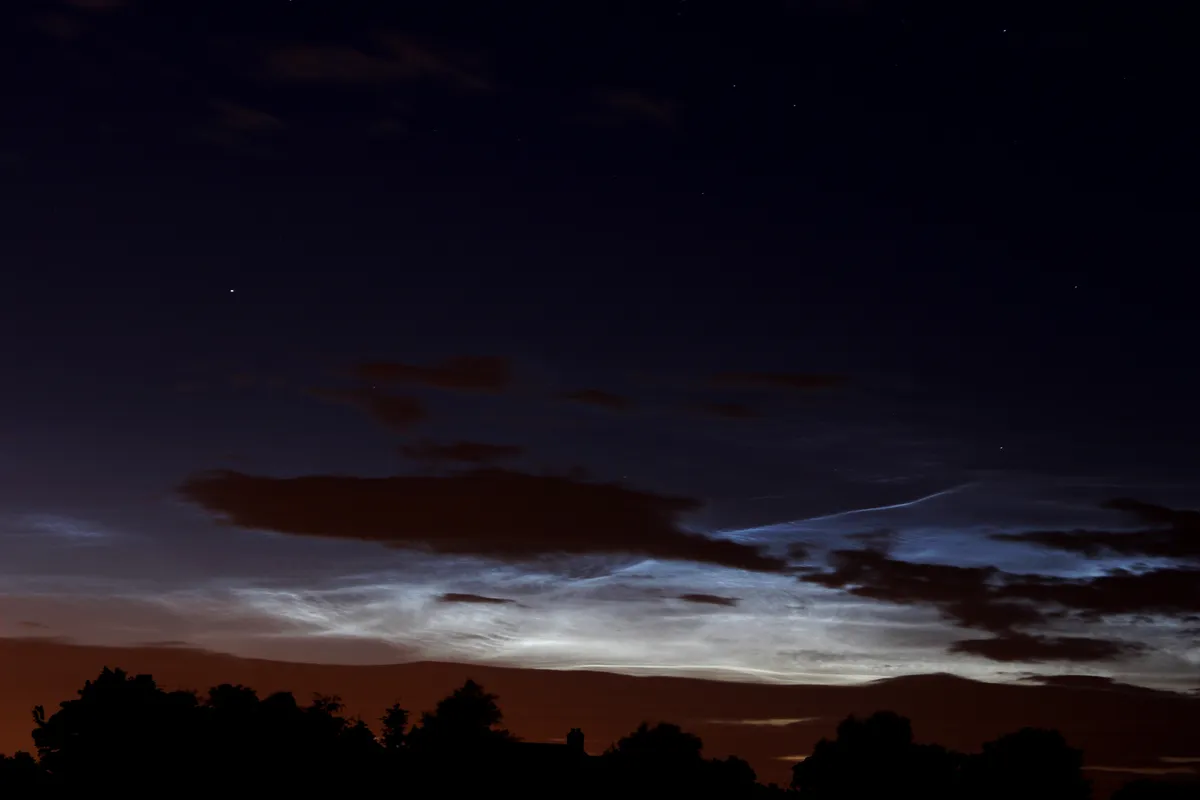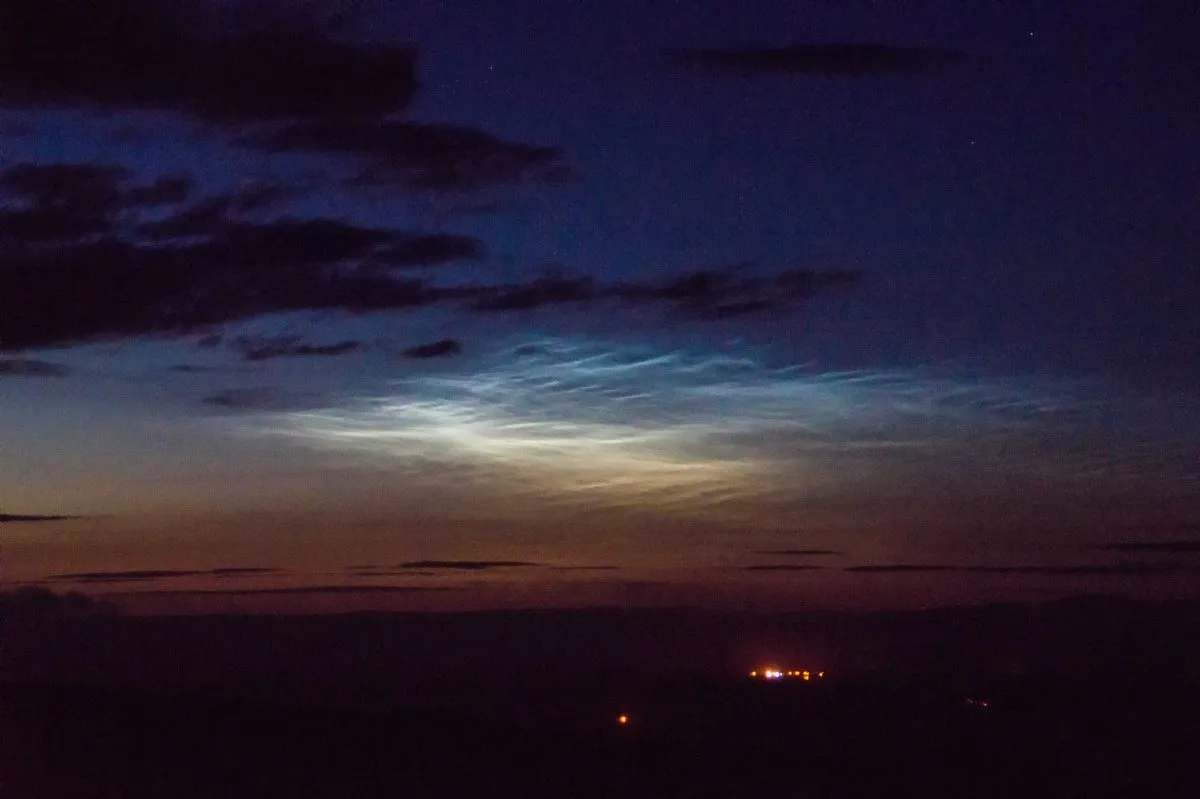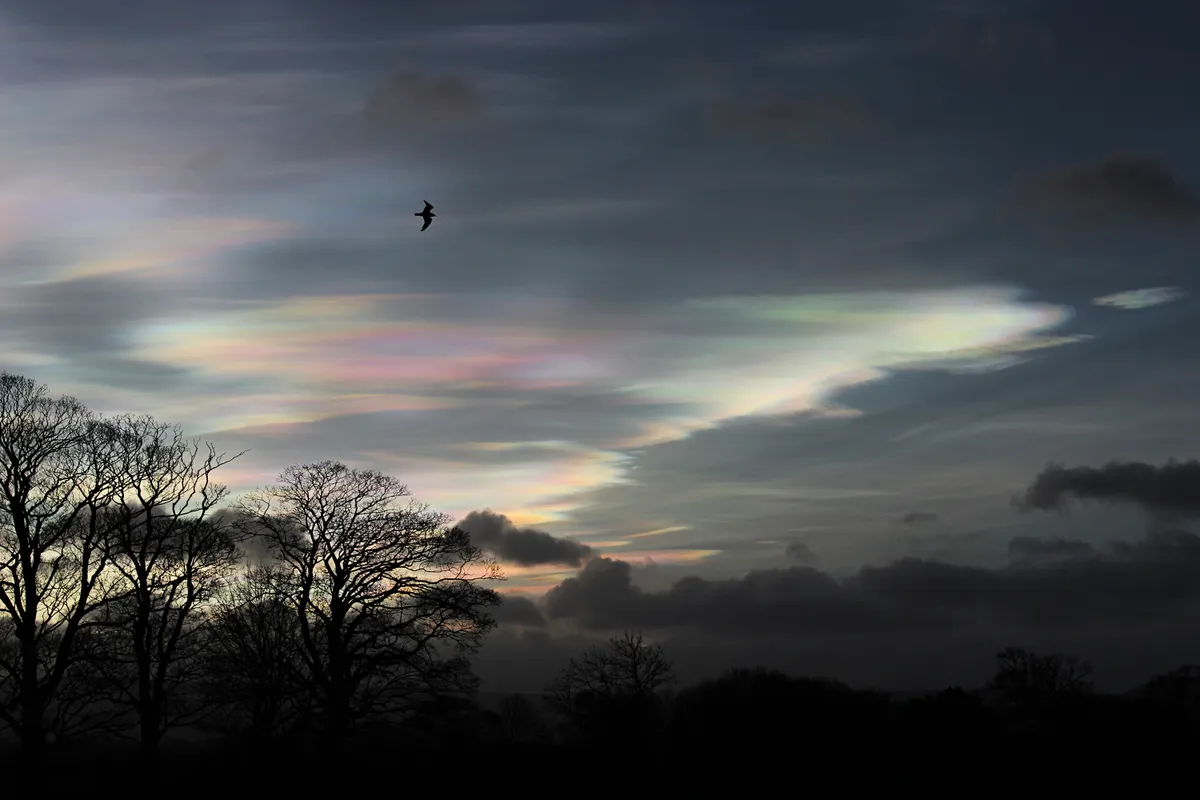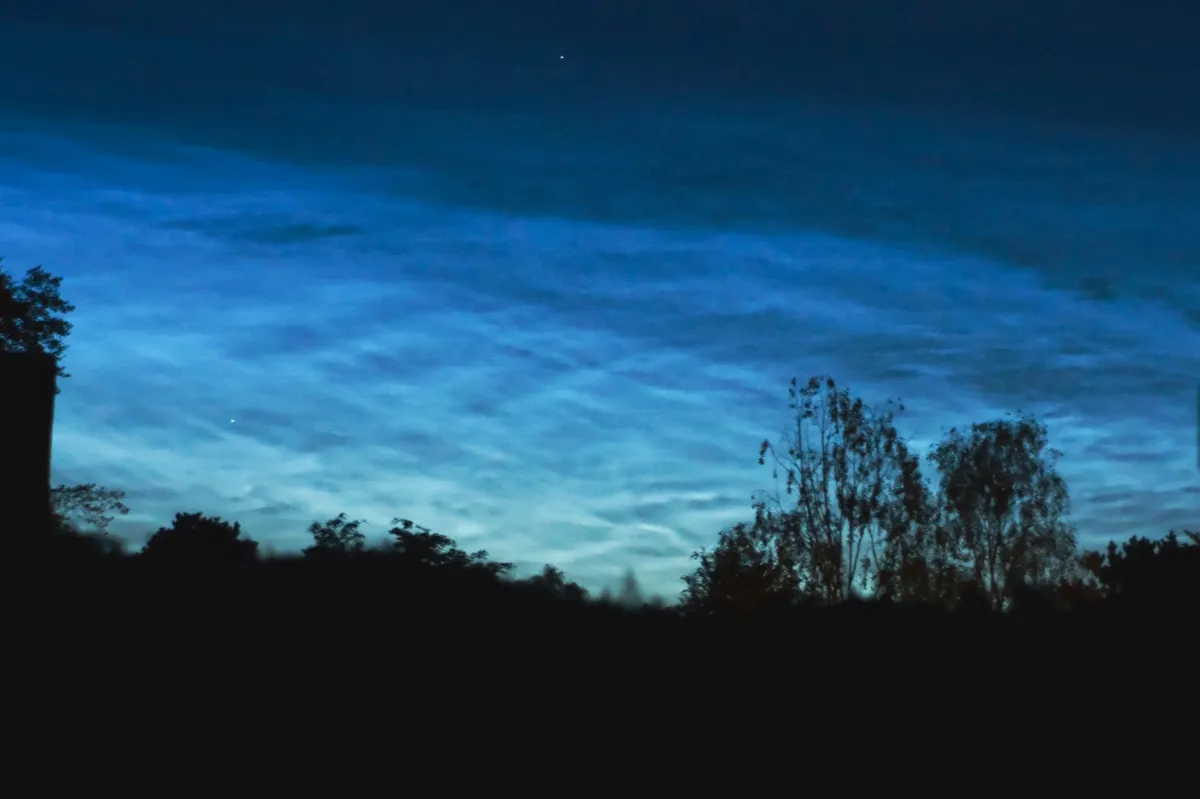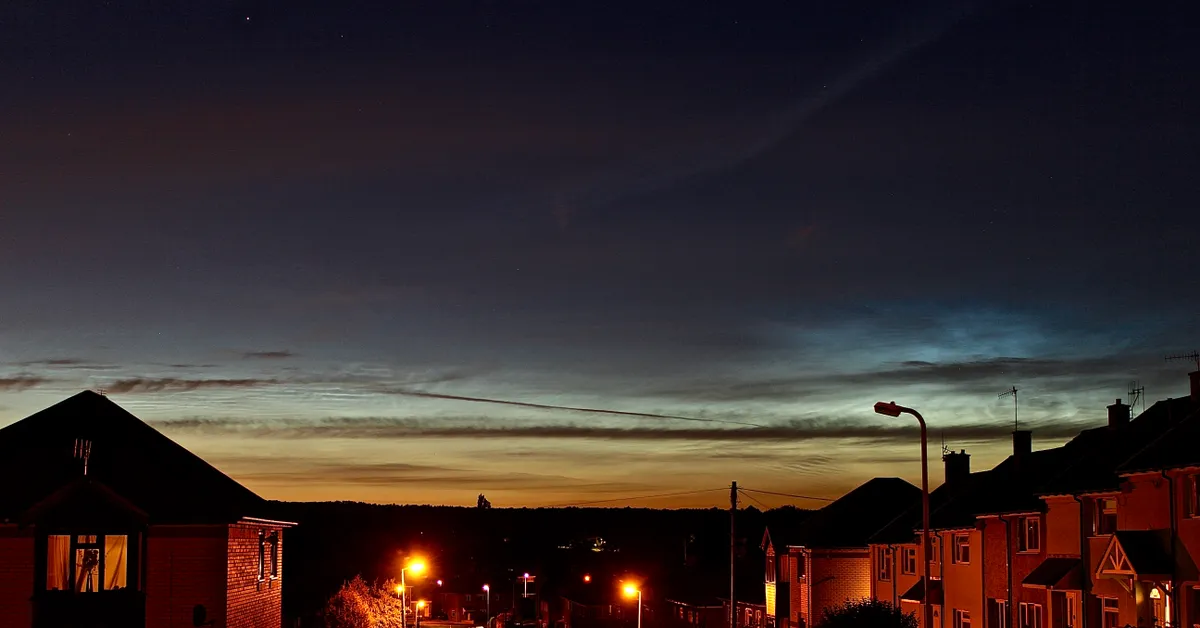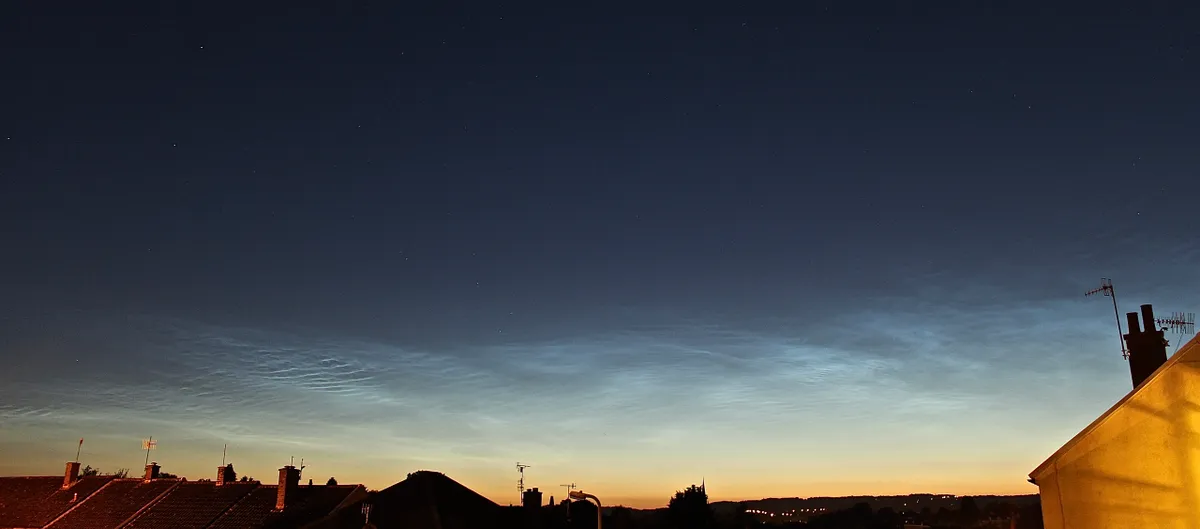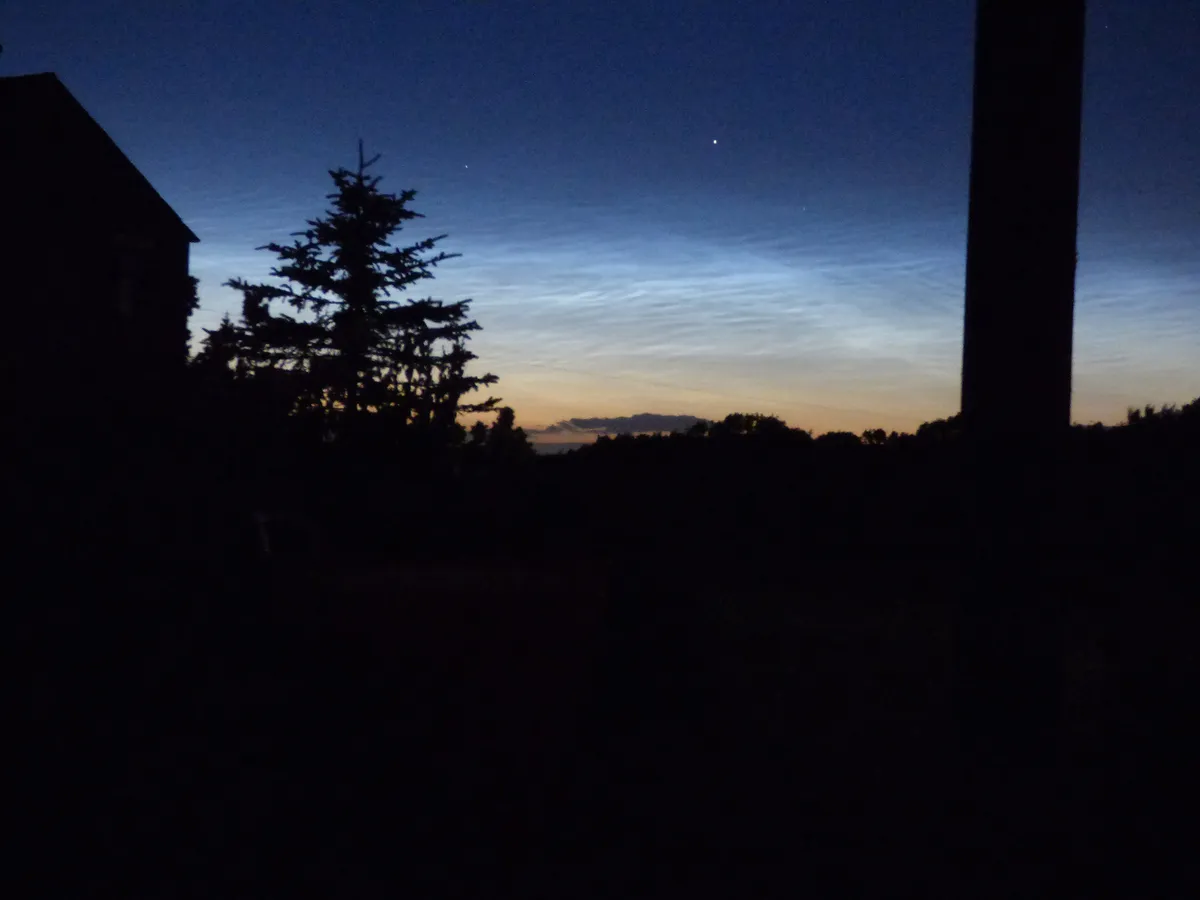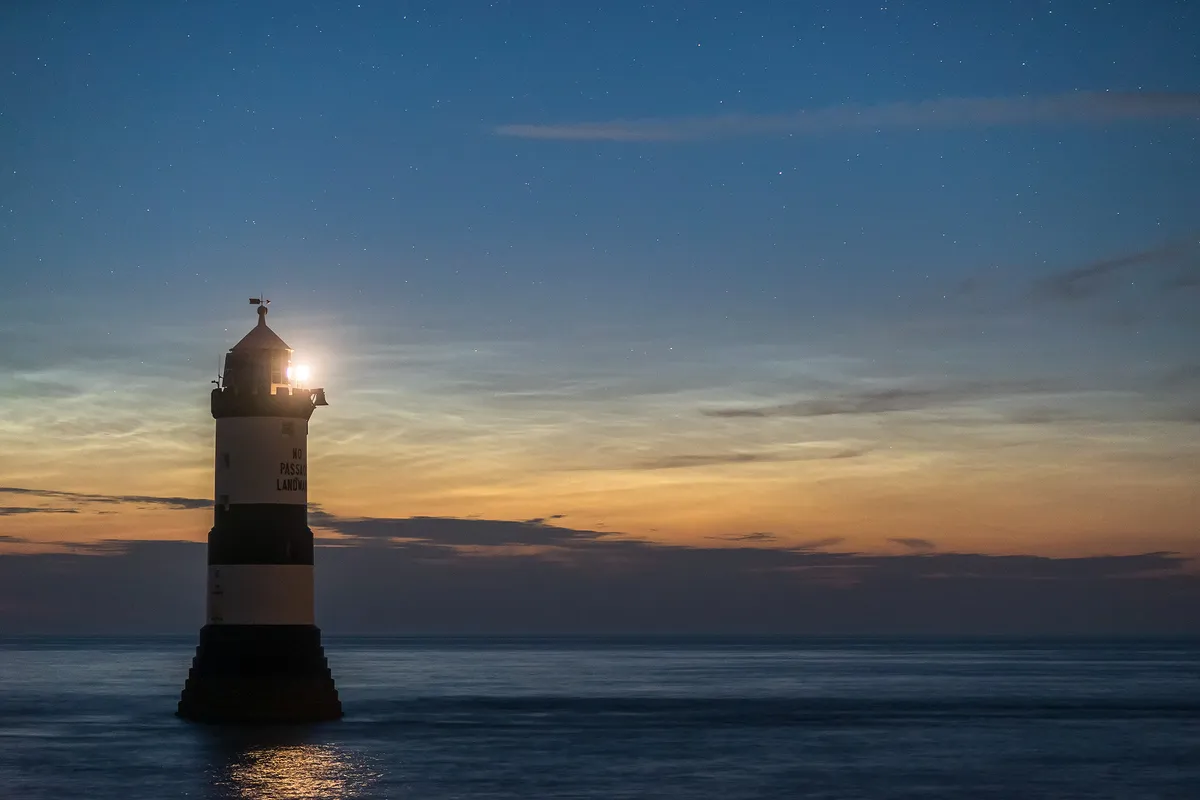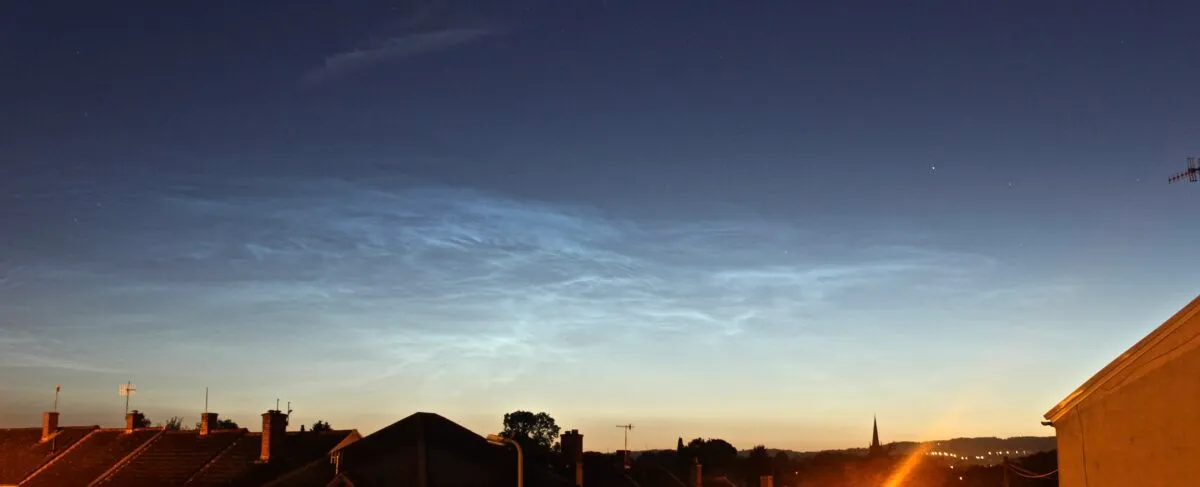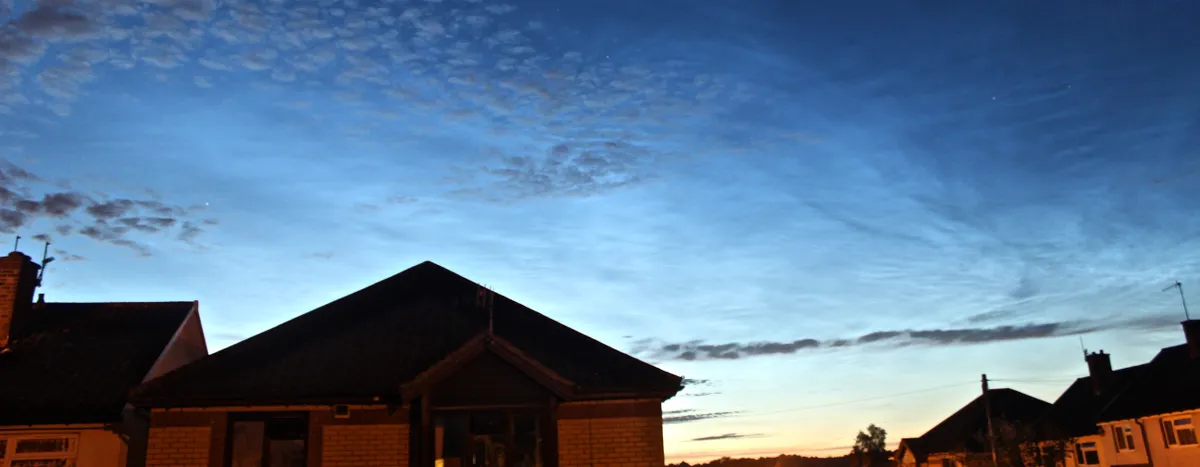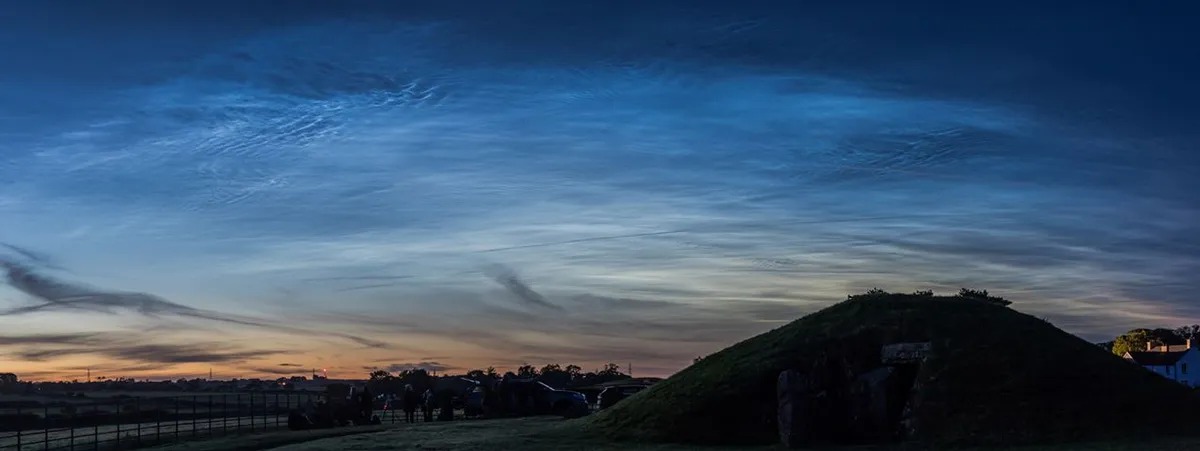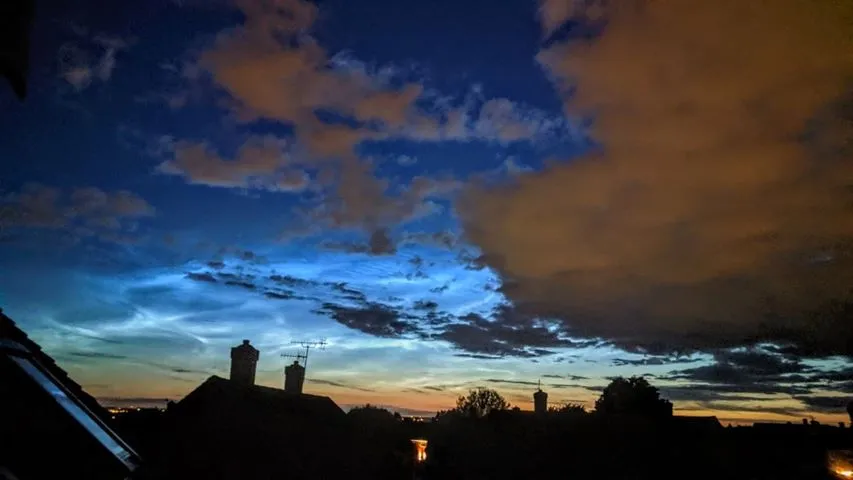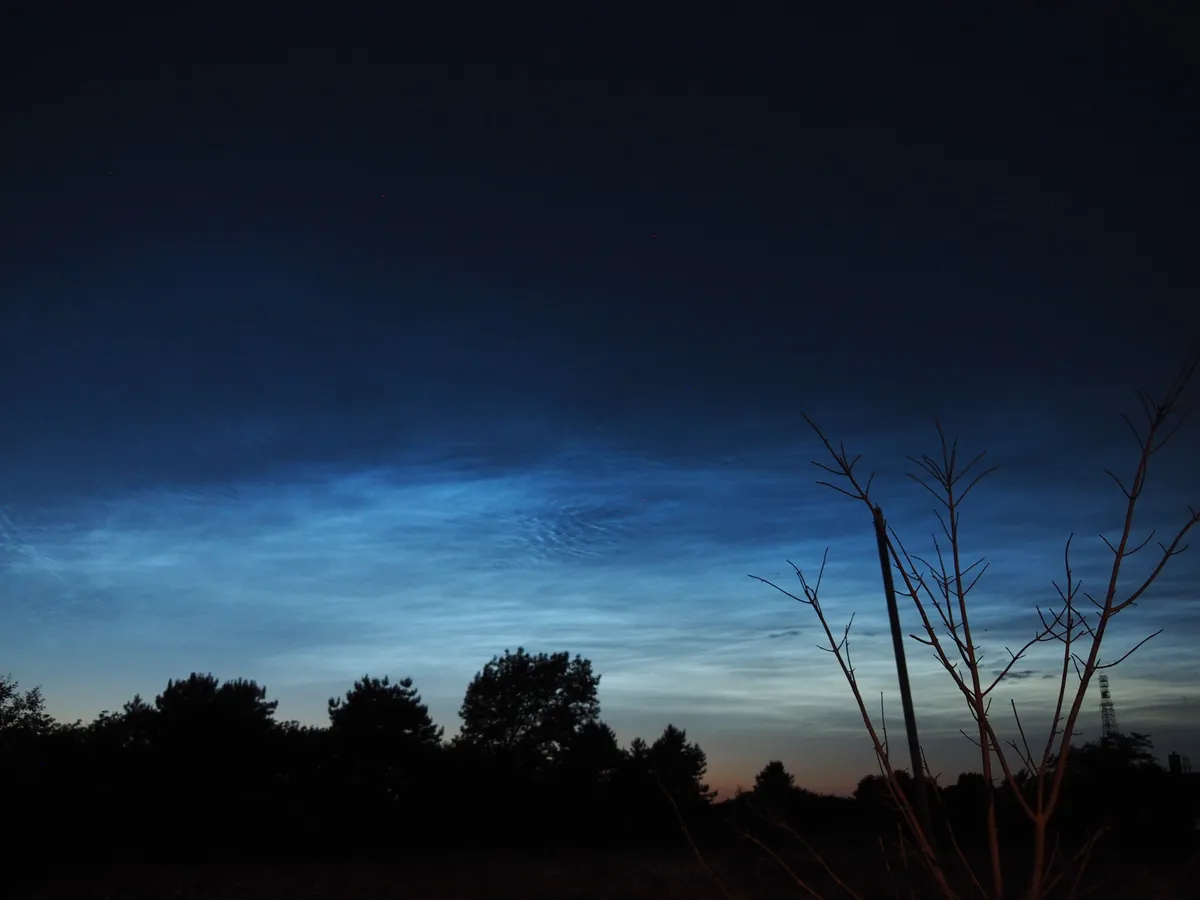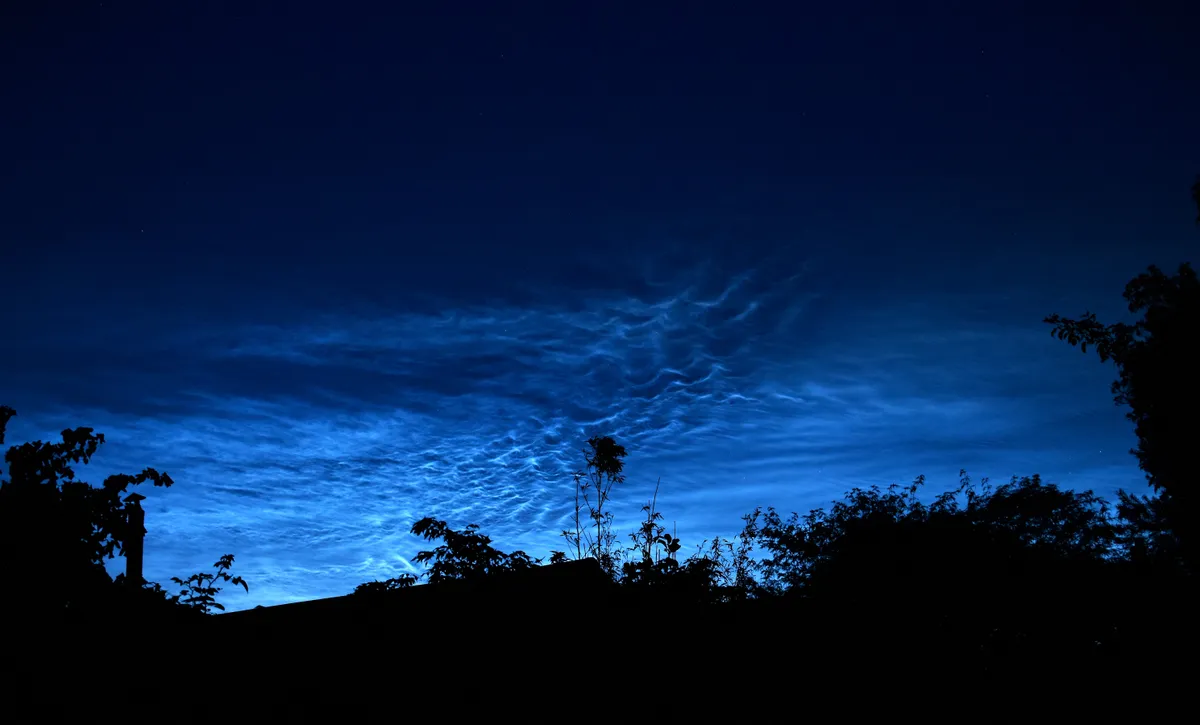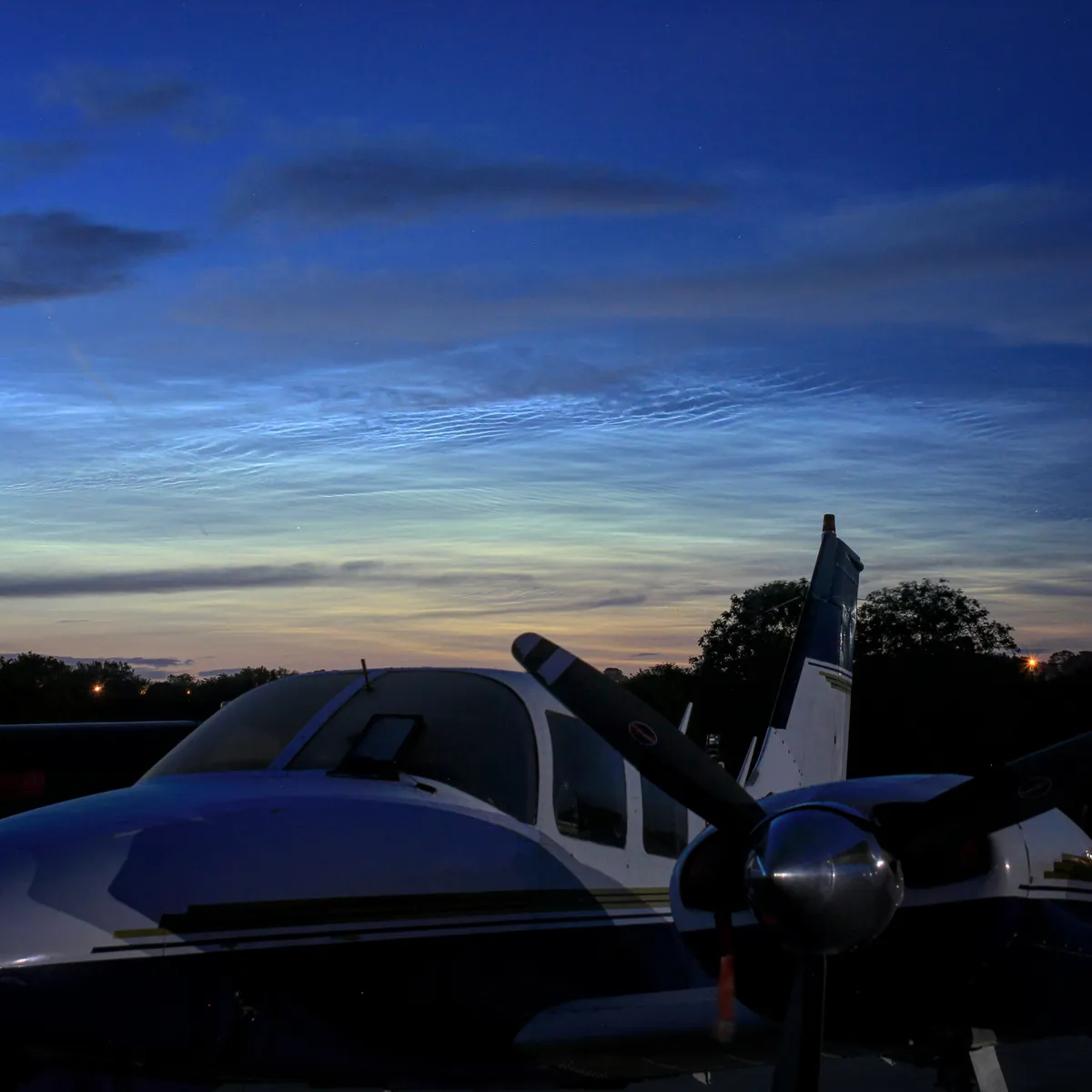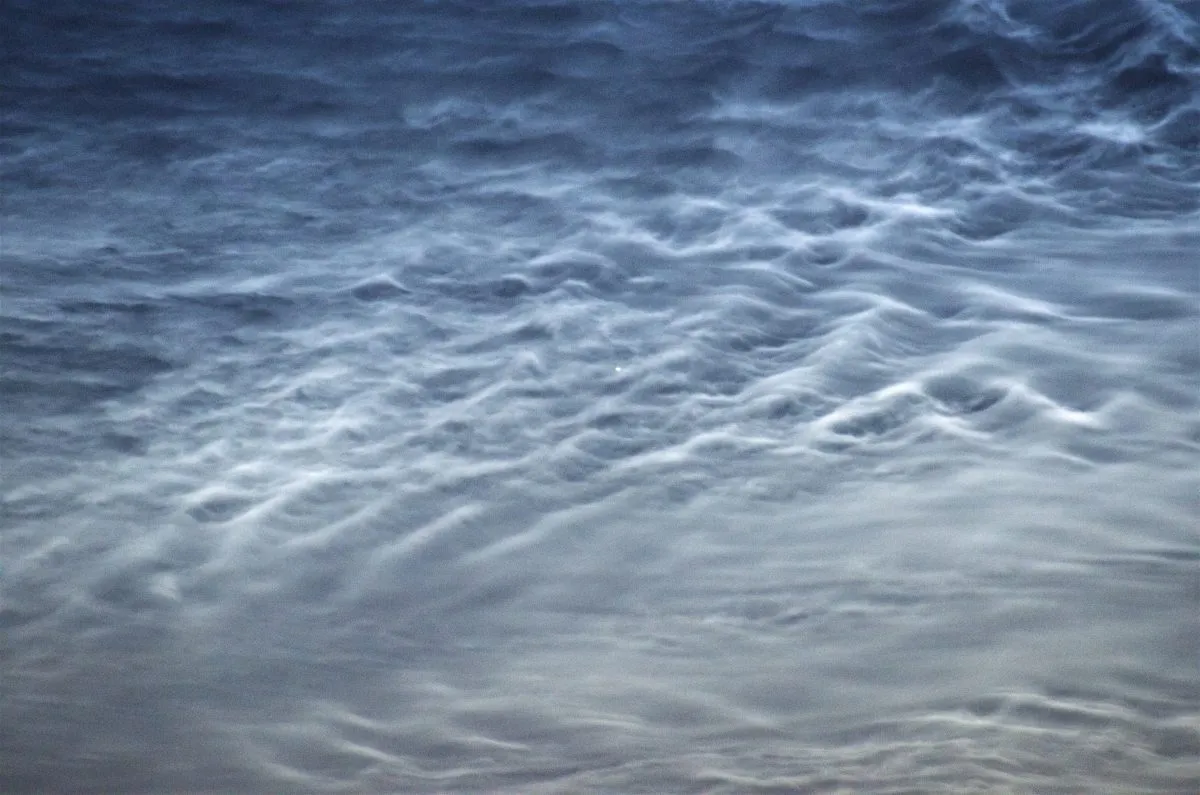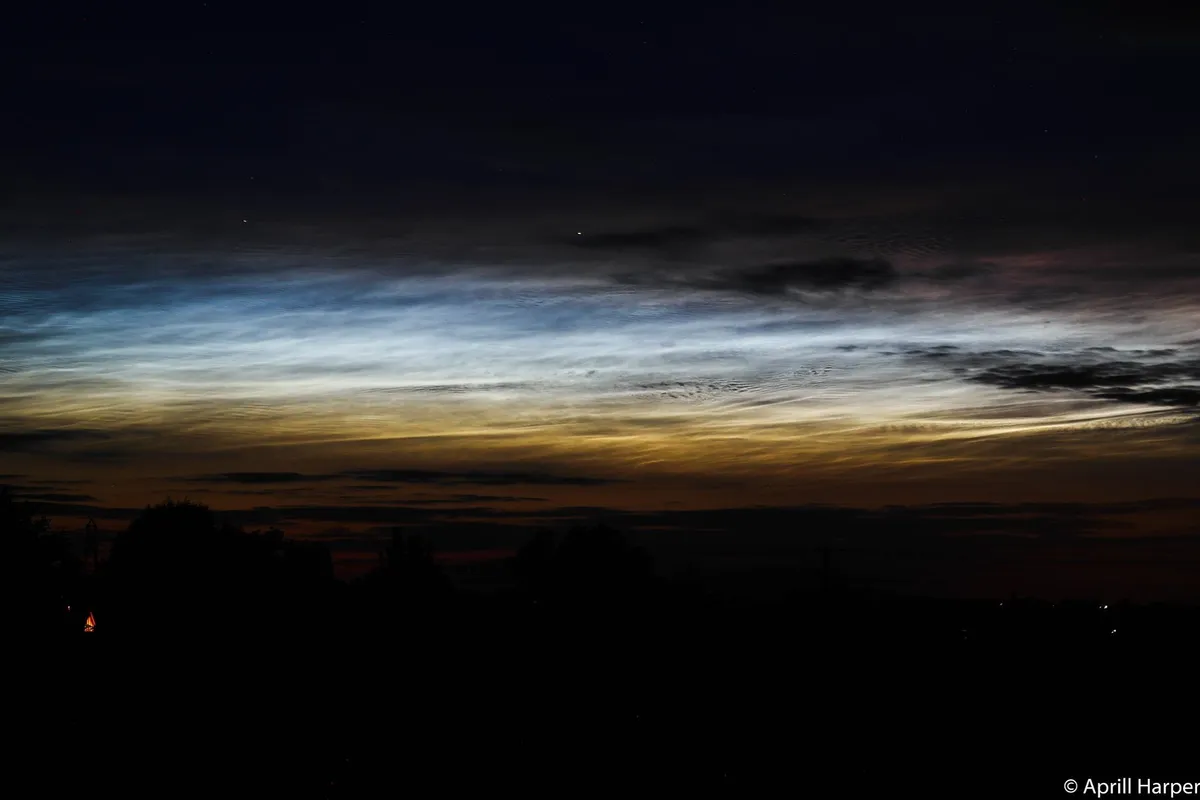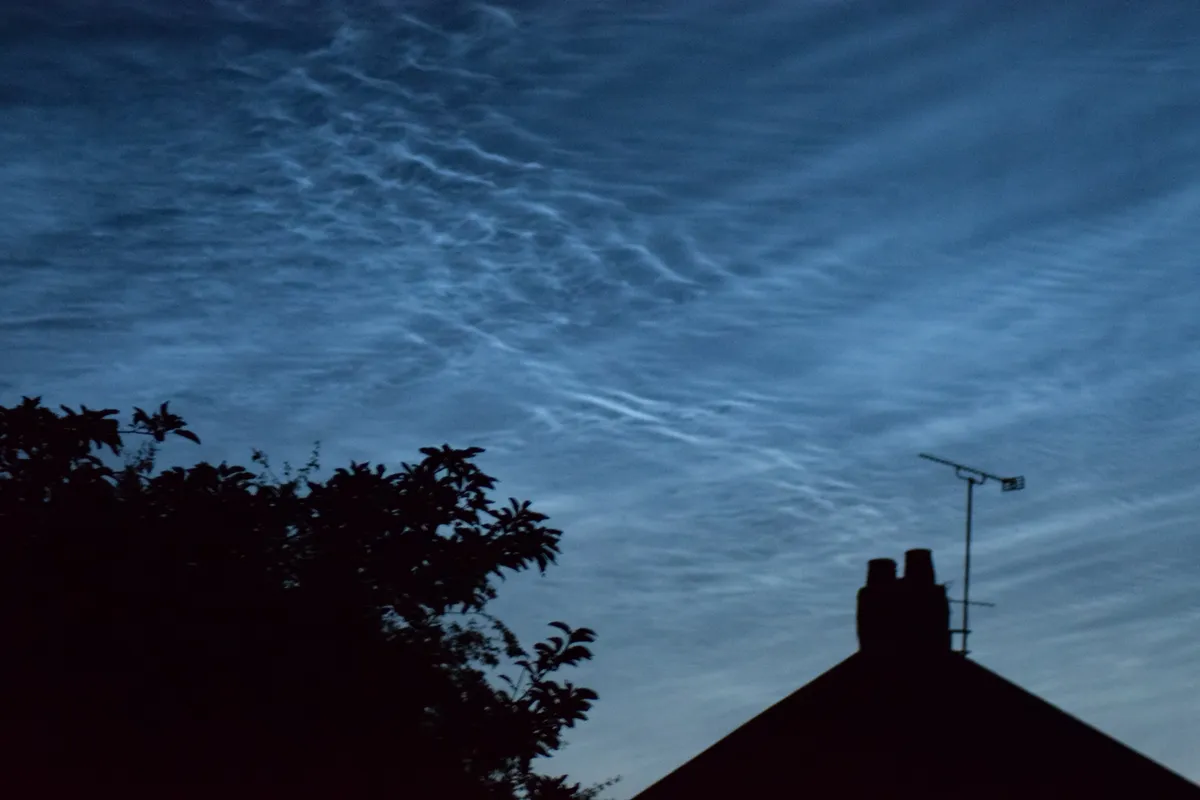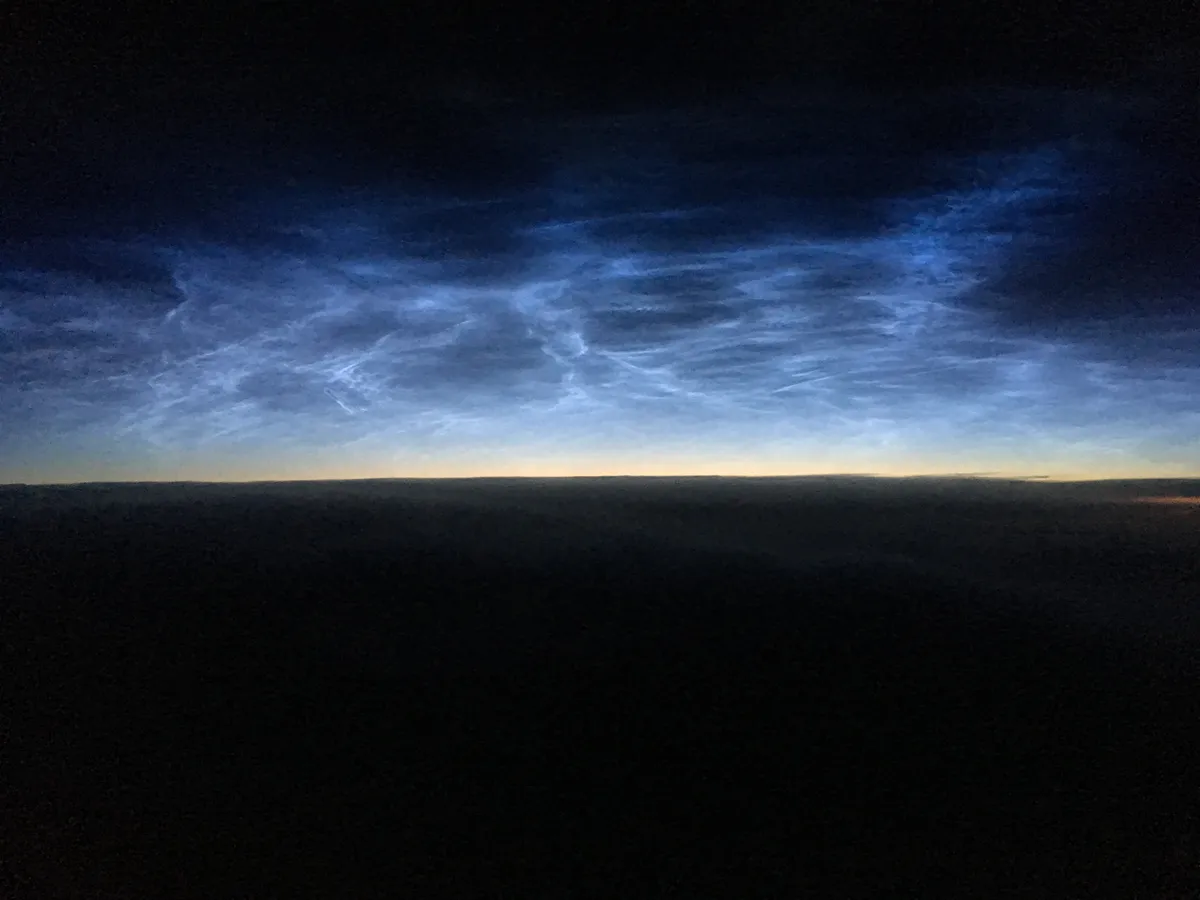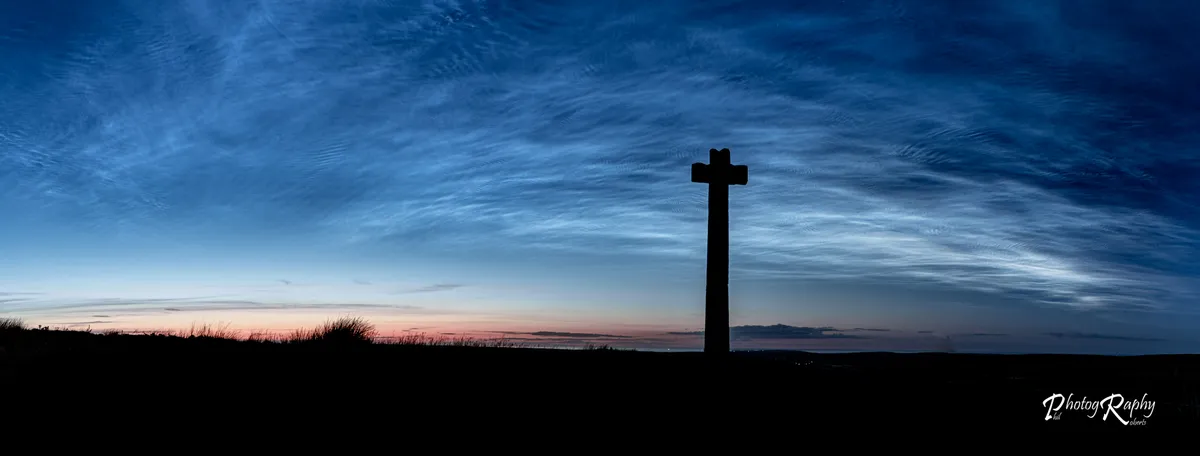Noctilucent clouds are clouds of icy dust that form at very high altitude on the edge of space, around 76–85km high, when temperatures and pressures in the upper atmosphere are just right.
Noctilucent clouds - or NLCs - are not visible all the time; there is an NLC season between the end of May and the start of August every year.

Because they are so high up, noctilucent clouds are illuminated by the Sun long after it has set for us at ground level, and we see them as blue-white swirls, curls and tendrils shining in the sky. That’s what their name means – ‘nocti’ (night) ‘lucent’ (shining).
But NLCs only form when every thing comes together. What's more, conditions only occur during the summer months and even then not every night.
For a detailed look, watch our noctilucent clouds video below
NLCs' beautiful appearance is part of their appeal for many sky-watchers during those long, bright summer nights. A strong display that fills the sky gives us something to look at until the sky darkens enough for galaxies and nebulae to be visible again.
A particularly impressive NLC display can be such a stunning sight that it makes one forget all about the Andromeda Galaxy’s dust lanes or the Orion Nebula’s star-speckled heart.
If you’re now intrigued by NLCs and wish you’d seen them before, the chances are you already have without even knowing it.
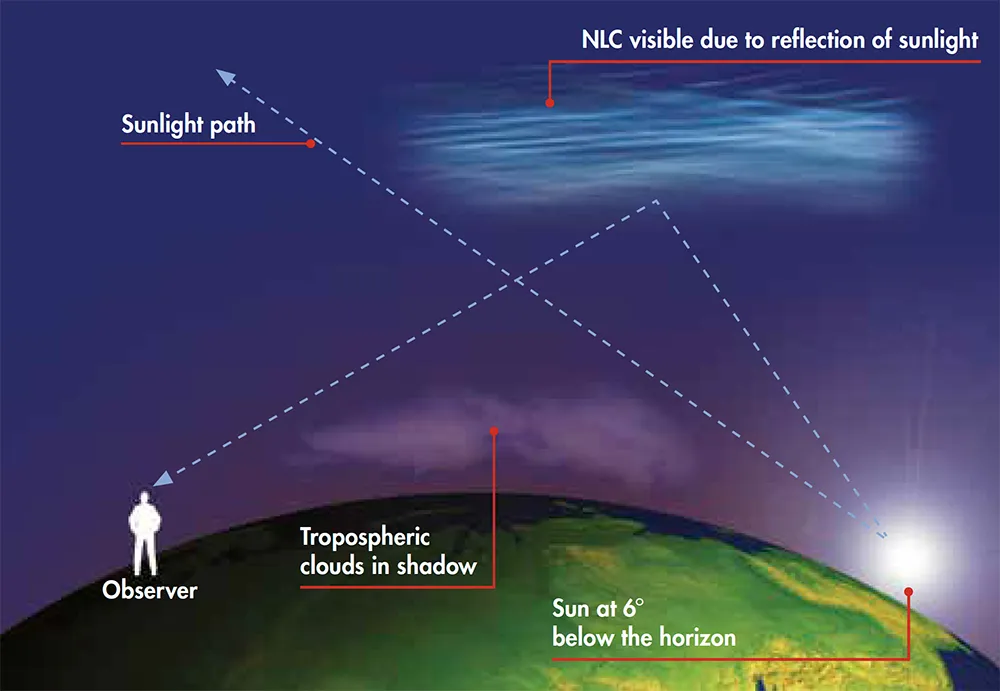
How to find noctilucent clouds
Observing noctilucent clouds is easy and, best of all, completely free. You don’t need any expensive telescopes, binoculars or cameras. Just a pair of eyes will be fine.
Having said that, a pair of binoculars will allow you to see fascinating detail and structure within an NLC display that is invisible to the naked eye.
You don’t need to be under a pitch black sky to see them, as a good display will be so bright that it will be visible from your back garden or even your bedroom window, as long as you’re facing north.
Noctilucent clouds typically appear 90 to 120 minutes after sunset or before sunrise, though can appear form the 30 minute mark.
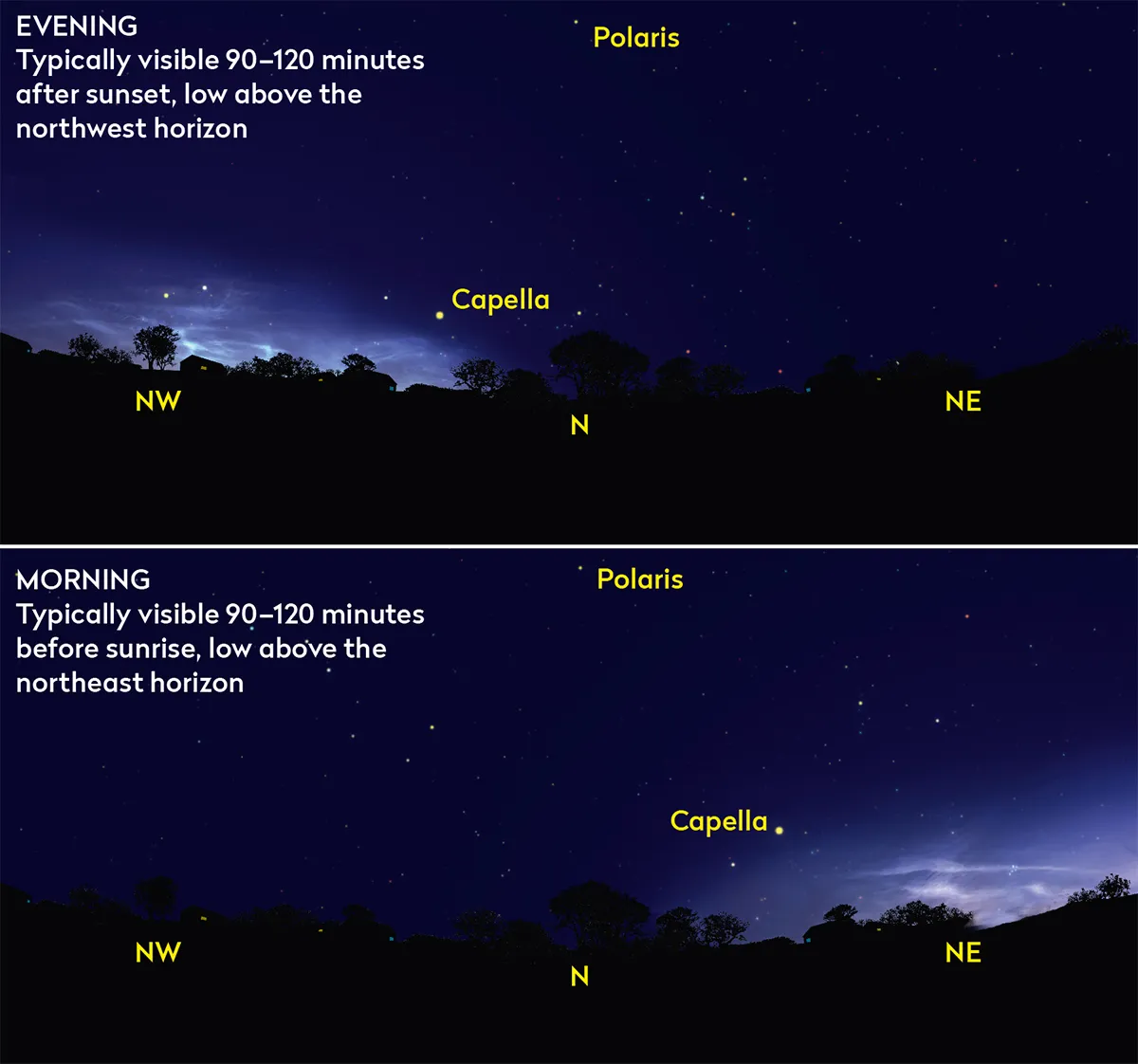
Typical NLC displays may be seen all night long, moving from the northwest, through north and ending low above the northeast horizon where they can be seen before sunrise
However, unlike the aurora, which can now be predicted with some accuracy many days in advance thanks to the work of Sun-monitoring satellites and observatories, an NLC display can’t be predicted more than a few hours in advance, because the conditions that lead to their formation are so specific and they only exist for brief periods.
In times past, NLC-watchers had no choice but to head out on every clear summer’s night in the hope that they would just appear in the northern sky. More often than not they didn’t, which was very frustrating.
Now NLC-watchers monitor satellite images and data to see if conditions in the upper atmosphere might be suitable for producing noctilucent clouds that evening.
As sunset approaches we can monitor north-facing webcams in countries further to the east of us, where the Sun has already set, to give us an alert for any displays that are already in progress, which we might see later.
And, of course, we use social media to communicate with fellow NLC hunters who will clang a virtual bell in cyberspace’s town square if a display is happening.

How to prepare for a noctilucent cloud display
So, if you want to see these mysterious clouds for yourself, how do you go about hunting NLCs?
Wait until sunset and then, if the sky is clear, wrap up warmly, grab your binoculars and camera if you have them and head out.
If you have a clear view to the north from your garden you won’t need to go any further than that, but as is the case with observing the aurora, the lower, flatter and less obscured your northern horizon is, the better your chances will be of seeing something.
And if you’re not sure which direction is north, here are two tips for you: look to the right of where the sky is still quite bright from the late sunset or look for the bright star Capella shining just above the horizon. If you find Capella you’re looking in the right direction.
And then? Then you wait. The NLCs will either appear, or they won’t.
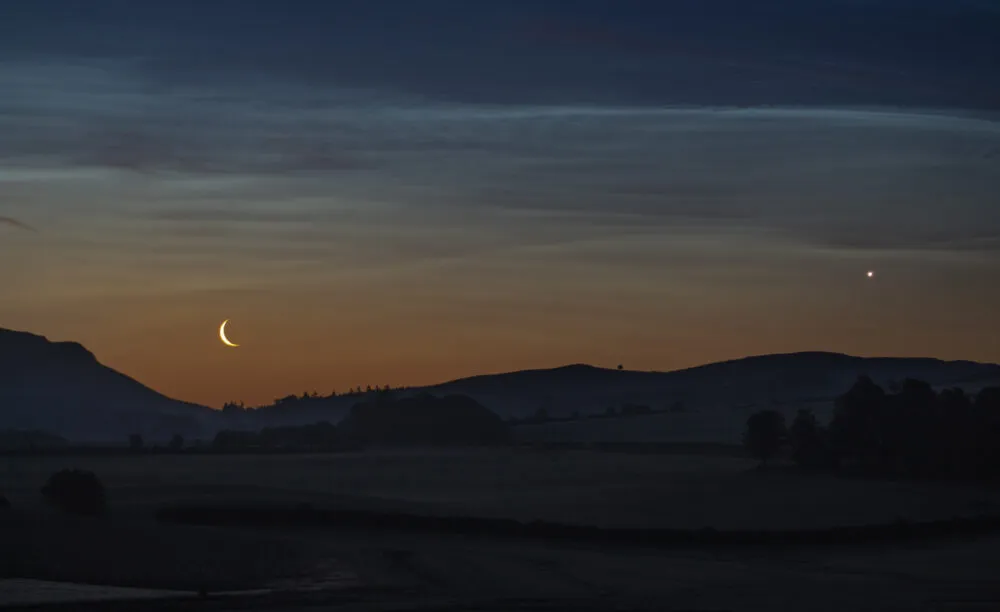
What noctilucent clouds look like
If NLCs do appear, the first you’ll see of them will probably be what look like a couple of streaks of gold-white cloud low in the northern sky, like distant vapour trails. Then it’s time to cross your fingers.
If you’re unlucky that will be all you’ll see and they will drop beneath the horizon out of sight. You’ll need to decide then if you’re going to stay out and see if they come back, or head home to bed.
As is the case with watching a meteor shower, stay out as long as you can; it’s not uncommon for a display to fade away to nothing and then return and be bright and beautiful.
But if you’re lucky, as the sky darkens those streaks will get brighter and higher, and will become more blue-white than gold.
You might see some feathery patches of blue-white. If you can see those, you’re seeing NLCs.
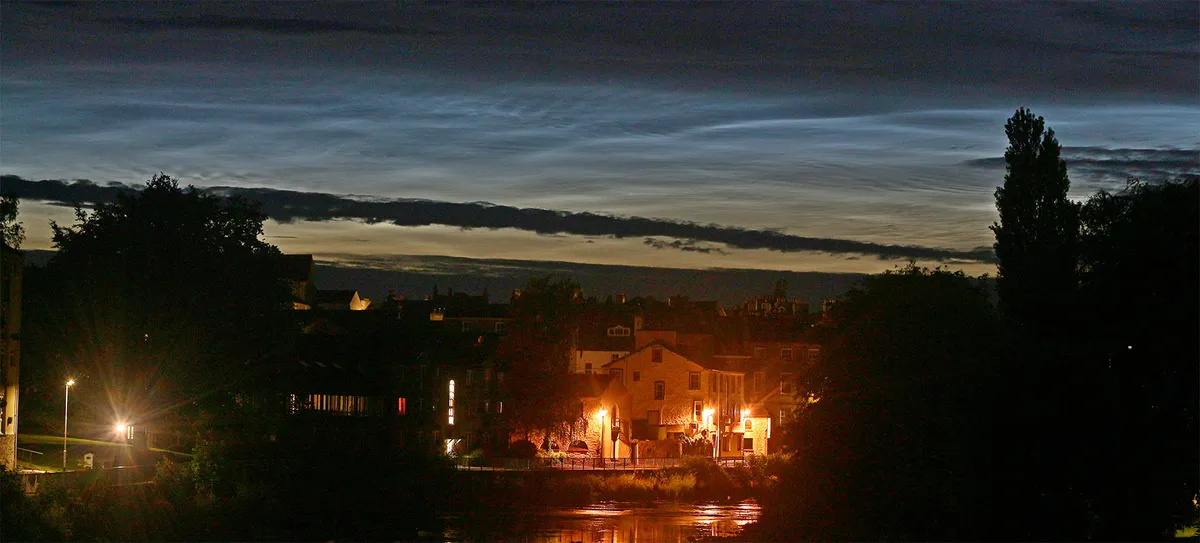
Then what have you to look forward to? Those lonely few strands of golden white will bloom into an arch or swirls of electric blue, extending slowly to the east and west.
As the display increases in height and brightness it will develop other structures and forms. You’ll see loops, curls and twirls of NLCs across the northern sky.
In places you’ll also see flat, feathered plates of NLCs marked with a distinctive cross-hatch pattern, like mashed potato decorated with a fork.
You’ll also see movement too, but you won’t see the NLCs fluttering and swaying like the aurora. Instead they move slowly over a timescale of minutes instead of seconds.
Curls will uncurl or curl tighter; tendrils and streamers will grow longer, or ravel up again; and cross-hatching will spread out in one place and grow more vivid in another.
You’ll notice these changes with the naked eye, but they’ll be more obvious with binoculars.
Sometimes an NLC display develops into a storm that covers half the sky. If you find yourself out under one of those you are in for a very special night indeed – and a long one, because such a display can still be going strong and filling the sky as the eastern horizon begins to brighten with the approach of dawn.
Gallery: images of noctilucent clouds
Noctilucent cloud storms
During an NLC storm all bets are off. All you can do is stand there, open-mouthed, entranced by what you’re seeing as the sky from east to west, and overhead, is painted with beautiful streamers, billows, whirls and swirls of electric blue light, bright enough to cast shadows.
You simply won’t know which way to look, in case you miss something happening in another direction.
Scanning the display with your binoculars you’ll shake your head in wonder at what you’re seeing – elegant twirls of lavender and blue wrapping around each other like snakes; spirals and curls of silver and white glowing like the filaments of light bulbs; veils of gold spreading out from one side of the sky to the other. There’s simply nothing else like it in astronomy.
Eventually though you will have to go home, either because the sky is so bright that the NLCs are being washed from it or because you can’t keep your eyes open any longer – but what memories you’ll have.
Perhaps NLC aren’t an astronomical phenomenon, strictly speaking, but they are a welcome sight in the summer sky for many astronomers and sky-watchers starved of views of the stars, galaxies, nebulae and clusters they look at during the other seasons of the year. And they are gorgeous.
5 tips for spotting noctilucent clouds
Find a suitable observing location
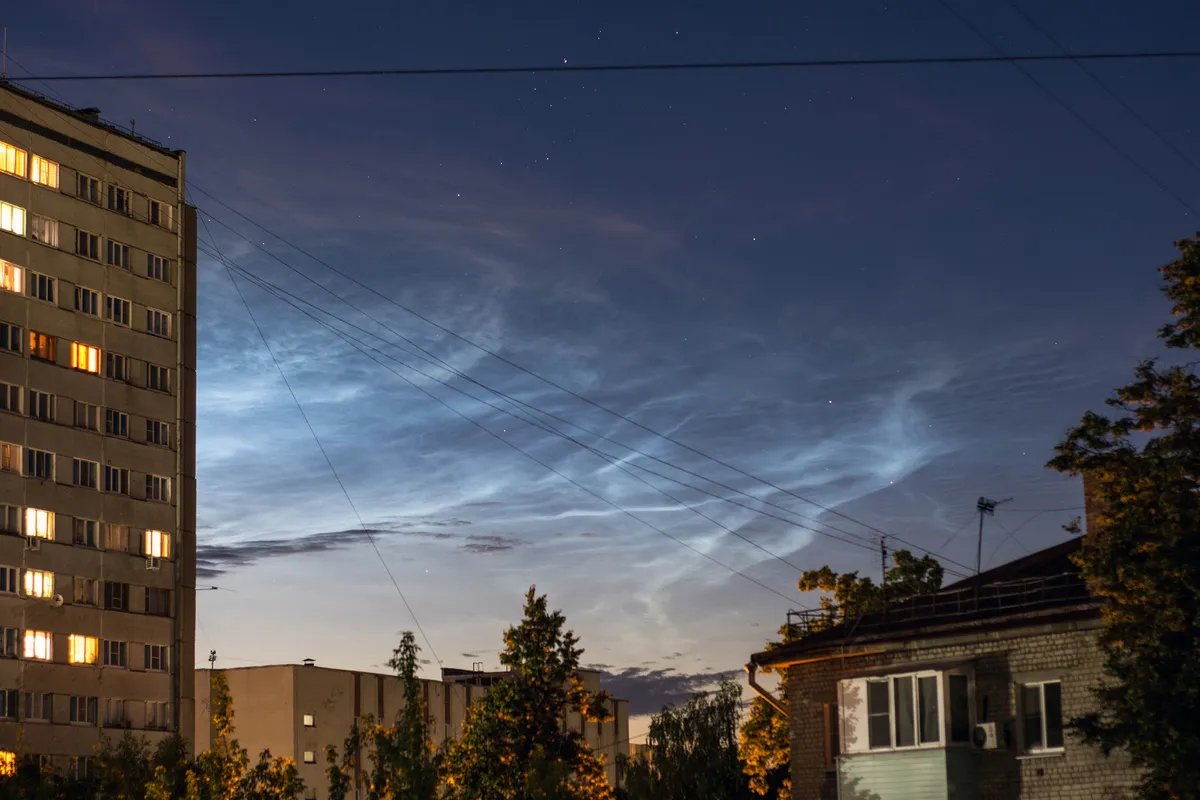
Major displays of NLCs, with activity reaching well above the horizon throughout the night, will be visible from your garden or even your bedroom window, as long as you can see the sky to the north.
However, smaller displays that hug the horizon will be much harder to see if your view north is obscured by neighbouring houses, tall buildings or hills.
You’ll have the best view of a display if you can get to somewhere with a low, flat horizon and a clear view sweeping from west to east. And obviously the less light pollution you have, the better.
Keep an eye online or on social media
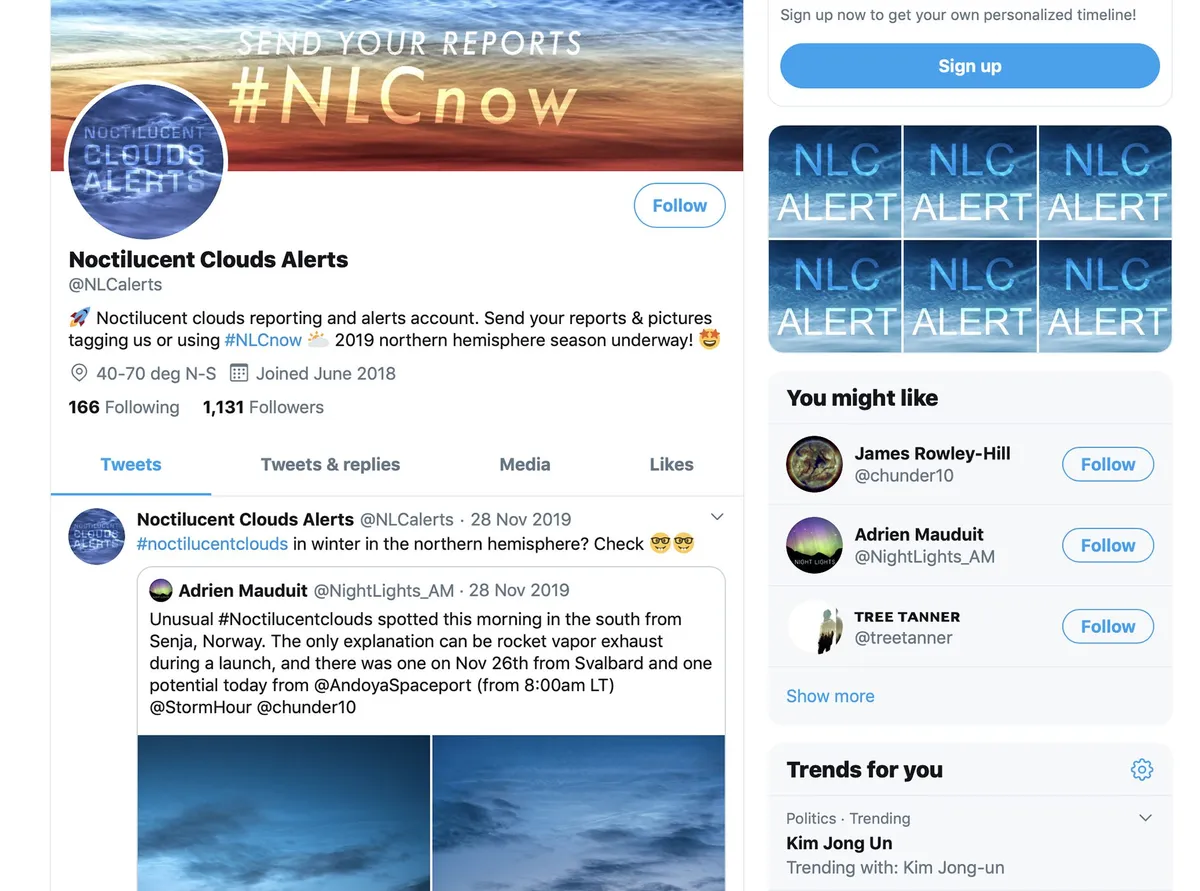
Most noctilucent cloud-watchers (NLCs) now use online resources to ensure they don’t miss a display. The more experienced ones monitor specialised websites that provide information about physical conditions in the upper atmosphere, looking for signs that NLCs might be forming, such as the website of Germany’s Liebniz Institute of Physics.
Others keep an eye on north-facing webcams in countries further east where sunset occurs firstto alert them when a display is visible.
Social media platforms such as Facebook and Twitter have communities of NLC-watchers who share their observations and alert members of the group when an impressive display is in progress; the bigger groups based in the UK are: Aurora UK on Facebook, or NLC Network and Noctilucent Clouds Alerts on Twitter.
Or simply scroll through the #noctilucentclouds hashtag on Twitter or Instagram for some inspiration.
All of these online resources mean it’s actually quite hard now to miss out on a big display of NLCs if you really want to see one.
Use binoculars

NLC displays are beautiful to the naked eye but they look even better through a pair of binoculars.
The same binoculars you use to look at the Pleiades, M31, and the phases of the Moon will give you very clear views of the subtle shapes, structures and forms NLCs can take, and will enhance their lovely colours too.
They will also help you see how bright NLC displays change shape through the night. And they are extremely useful for helping you spot the first faint signs of a display before it becomes obvious to the naked eye.
if you need help choosing a pair, read our guide to the 10 best binoculars for astronomy.
Capture them with your smartphone camera

You don’t need an expensive or complicated camera to photograph NLCs; many phones now have cameras that are more than good enough to take lovely photographs of bright displays.
Hold your phone as steady as possible, make sure that you include some foreground objects in your pictures for scale, and try your phone camera’s night mode setting if it has one.
If you can, frame your photos so the NLCs are reflected in a river or a lake, or have trees or buildings silhouetted against them. If a display is too big to fit on one single photo, try your camera’s panorama mode.
Read our guide to smartphone astrophotography.
Take long exposures with a DSLR camera

A modern DSLR camera will take beautiful photos of NLCs. Fit it with a wide-angle lens, set it to manual so you can take long exposures and mount it on a tripod to keep it steady.
With the aperture as wide as possible, set the ISO to 800 and take a few test exposures of several seconds.
If the NLCs are burned out and no detail is visible, reduce the ISO and the exposure time until the photos show the display properly.
Use a longer lens and higher ISO to record fine structure within NLCs. You could even try an NLC selfie, showing you silhouetted against them.
For more astrophotography advice, read our guide on how to photograph noctilucent clouds.
If you manage to see or photograph NLCs, be sure to let us know. Find out more info about how to send us your astrophotos, or get in contact with us via Facebook, Twitter and Instagram.
This article originally appeared in the June 2020 issue of BBC Sky at Night Magazine.
